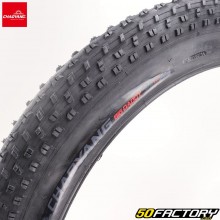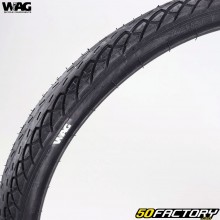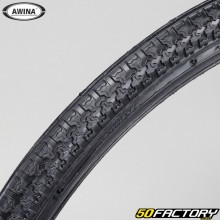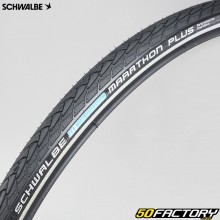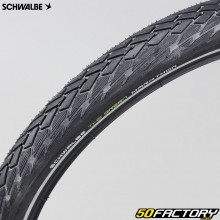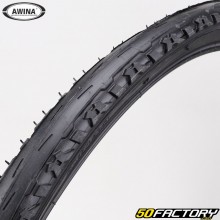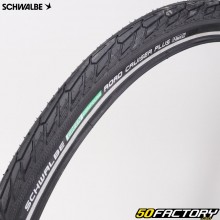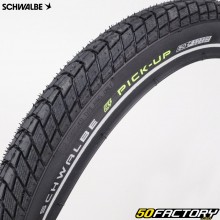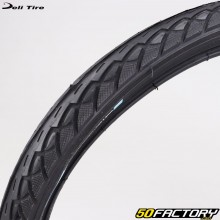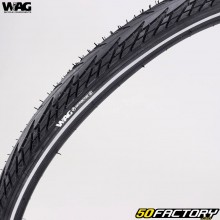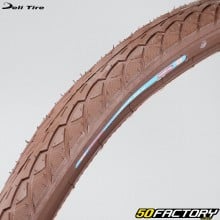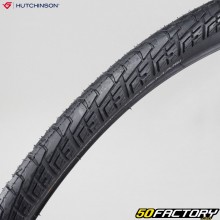 Tyre
- pages 6
Tyre
- pages 6
-
- STOCK EXHAUSTED-42% 10,20 € 5€92
- IN STOCK8€30
- IN STOCK29€90
- IN STOCK47€90
- IN STOCK9€60
- IN STOCK11€30
- IN STOCK9€60
- IN STOCK11€30
- IN STOCK11€50
-
- IN STOCK65€80
- IN STOCK34€90
- IN STOCK9€90
- IN STOCK11€60
-
- STOCK EXHAUSTED17€10
-
-
-
- STOCK EXHAUSTED-28% 31,60 € 22€75
-
- STOCK EXHAUSTED-28% 26,60 € 19€15
- IN STOCK10€10
- STOCK EXHAUSTED31€20
- IN STOCK9€90
-
-
- STOCK EXHAUSTED25€70
- IN STOCK41€00
-
-
- IN STOCK12€70
- IN STOCK11€10
- IN STOCK17€90
- IN STOCK25€90
- IN STOCK25€90
-
- IN STOCK38€30
- IN STOCK-36% 16,80 € 10€75
-
- IN STOCK-16% 15,80 € 13€27
When it comes to choosing components for your city bike, the tyre is an essential element that deserves special attention. Whether you are an experienced cyclist or a beginner, understanding the specifics of city bike tires and knowing how to choose, maintain and replace them is crucial to ensuring a safe and enjoyable ride in an urban environment.
Understanding the city bike tire
What does that mean ?
A city bike tire is specifically designed to meet the demands of urban riding. It must provide good grip on a variety of surfaces, such as asphalt, cobblestones, and even sidewalks. These tires are often wider than those of road bikes, providing better stability and increased comfort. Their tread is usually smooth or slightly grooved to reduce rolling resistance and facilitate propulsion.
Specific characteristics of these tires
City bike tires are distinguished by theirar several specific characteristics:
- Durability: They are designed to withstand daily wear and tear from city commutes and varied road conditions.
- Adhesion: Their tread provides good grip on different surfaces, even par humid weather.
- Comfort: Thanks to their width and construction, they absorb shocks and vibrations better, thus offering superior comfort.
- Puncture resistance: Many city tires are equipped with protective layerstrices to minimize the risk of punctures.
How to make the right choice
Proper size for a city-friendly tire
The size of a city bike tire is a crucial factor to consider. The dimensions are usually indicated on the sidewall of the tire and include two main measurements: diameter and width. For a city bike, a tire width between 28 and 42 mm is often recommended. This choice offers a good compromise between comfort, grip and handling.
Ideal pressure for these tires
Tyre pressure is another key factor in the performance and durability of your tyres. Too low a pressure can cause premature wear and increase the risk of punctures, while too high a pressure can reduce comfort and grip. The ideal pressure is usually between 3 and 5 bar (45-70 psi), but it is always advisable to check the manufacturer's specific recommendations.
Determine the type of tire needed
The type of tire you need depends on your driving style and the road conditions you encounter most often. If you mainly ride on well-maintained roads, tires with a smooth tread will be sufficient. For those who encounter gravel roads or cobblestones, tires with a slightly knobby tread will provide better traction.
The criteria to be taken into account
Here are some criteria to consider when choosing the right city bike tire:
- Compatibility: Check that the tire is compatible with the rim of your bike.
- Quality: Choose tires from recognized brands to ensure better durability and performance.
- Type of land: Choose tires that are suitable for the type of terrain you ride on most often.
- Budget: Define a budkeep in mind that investing in quality tires can save you from frequent replacements.
The importance of puncture resistance
Characteristics of a durable tire
A puncture-resistant tire is equipped with specific technologies to minimize the risk of punctures. These tires often incorporate a protective layer of Kevlar or aramid, materials known for their high puncture resistance. In addition, their tread is designed to keep sharp objects away and reduce the risk of damage.
Choosing a Puncture Resistant Tire
Choosing a puncture-resistant city bike tire is especially important for urban commutes where you may encounter debris, glass, or nails. Reputable brands like Schwalbe, Continental et Michelin offer models specifically designed to provide maximum protection against punctures.
Possibility to use mountain bike tires in the city
Pros and cons
It is possible to use mountain bike tires in the city, but this has both advantages and disadvantages. Advantages include better grip on uneven surfaces and increased resistance to punctures. However, they can also increase rolling resistance, which can make riding more tiring over long distances.
When to use mountain bike tires in an urban environment?
Mountain bike tires can be useful in urban environments if you frequently have to ride on unpaved paths, trails or poorly maintained roads. They offer better traction and greater robustness in these conditions. However, for use mainly on asphalt roads, it is better to choose specific tires for the city.
Maintenance and lifespan of these tires
How to extend their lifespan?
To extend the life of your city bike tires, it is essential to follow a few maintenance tips:
- Regular check: Inspect your tires regularly for cuts, punctures, or signs of wear.
- Maintaining pressure: Make sure your tires are always inflated to the recommended pressure.
- Cleaning : Clean your tires after every ride to remove debris and dirt that could damage the tread.
- Rotation: If possible, rotate the position of your front and rear tires regularly to ensure even wear.
When should they be replaced?
City bike tires should be replaced when they show signs of significant wear, such as cracks, gouges, or a slick tread. Typically, a quality tire can last between 3 and 000 kilometers, but this can vary depending on usage and road conditions.











